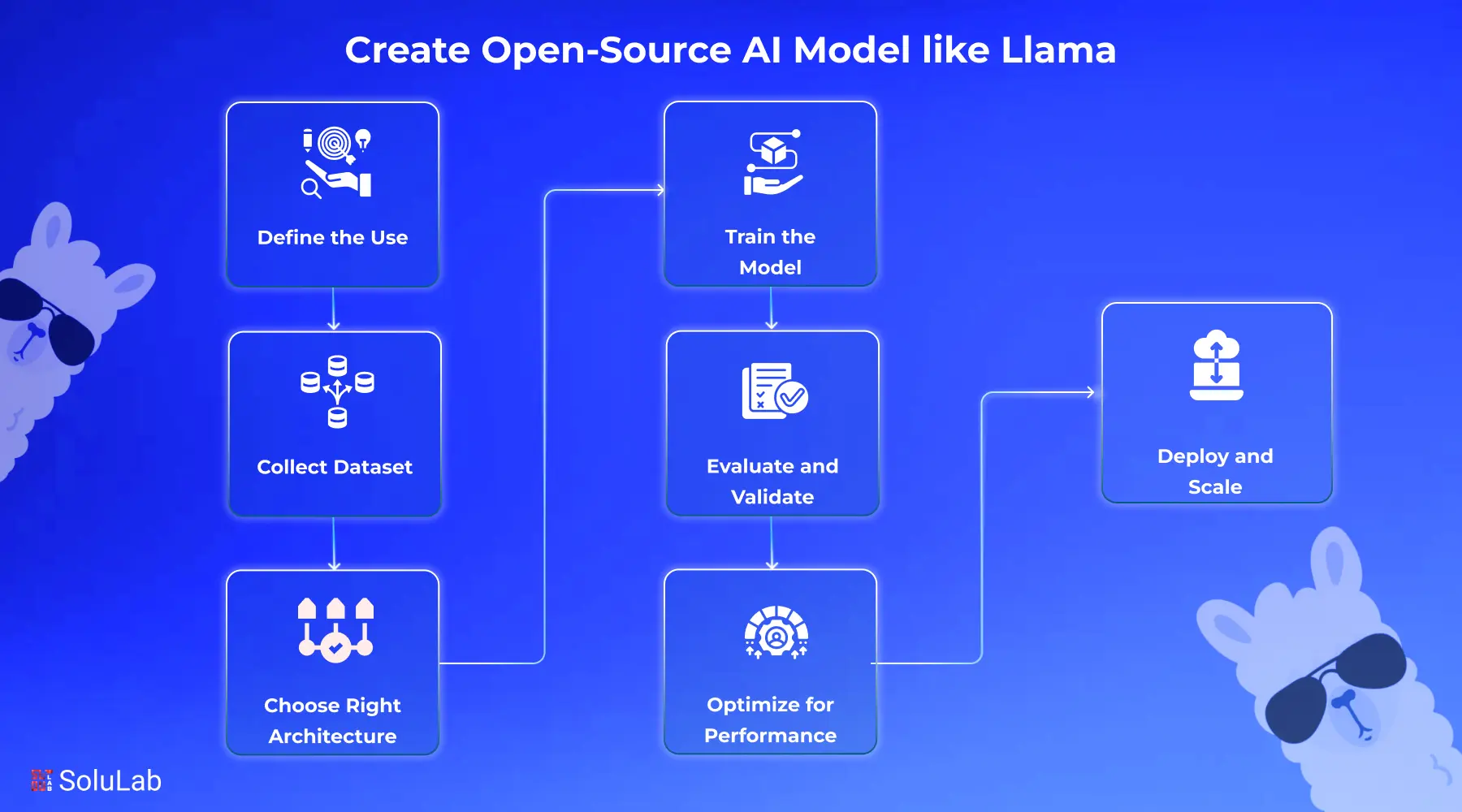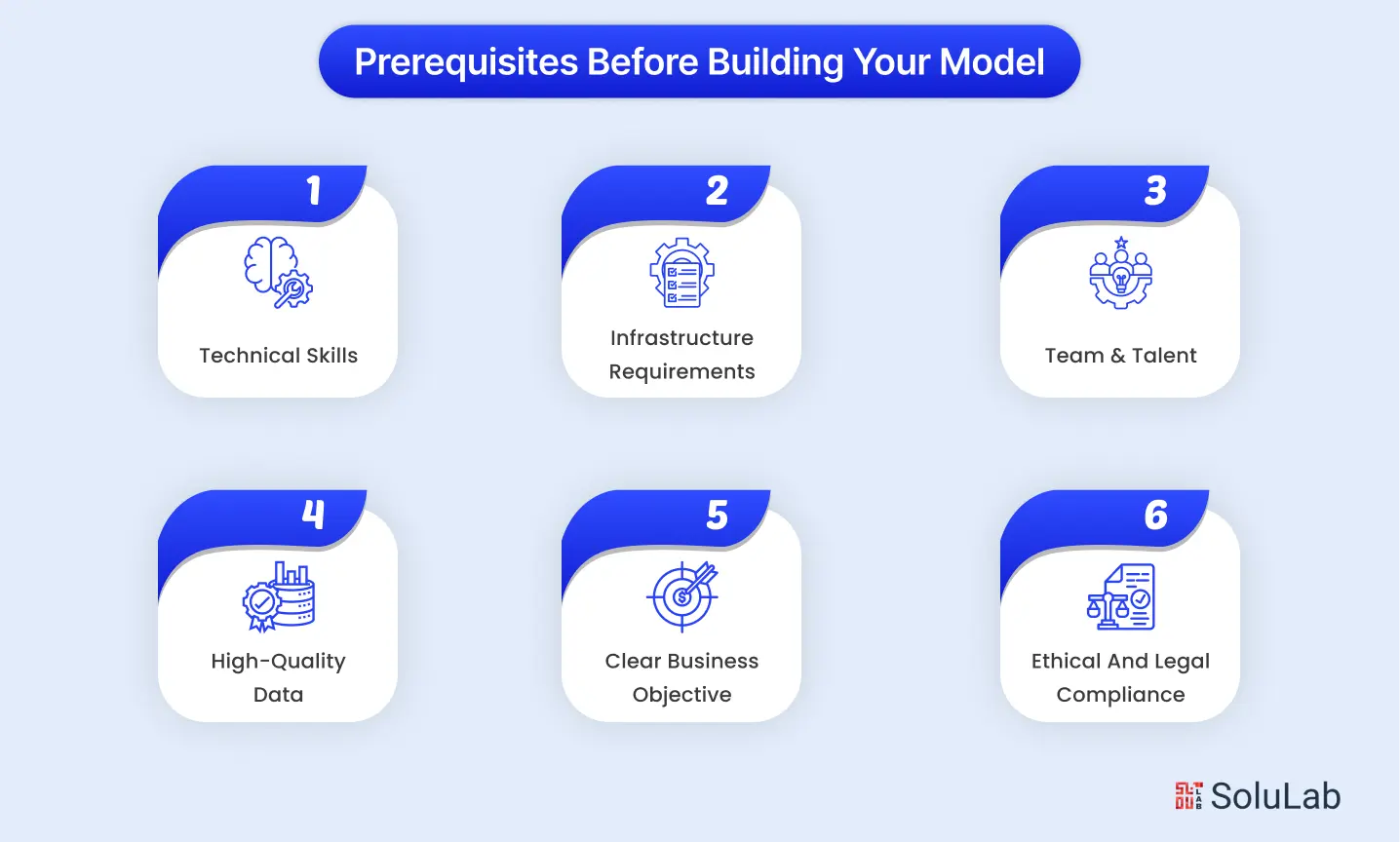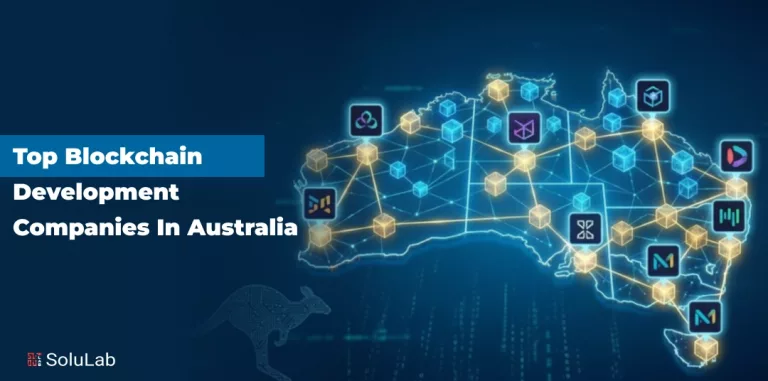
Have you ever felt like building your own AI model is only for big tech companies with massive teams and millions in funding?
Most beginners and even experienced developers get stuck thinking they need insane computing power, secret algorithms, or deep ML PhDs even to get started. But here’s the truth: you can build your open-source AI model even from scratch if you follow the right process and use the tools already available.
As of February 2025, DeepSeek had 61.81 million monthly active users, marking an 83.4% increase from the previous month.
In this guide, I’ll break it all down into simple, actionable steps so you can go from idea to deployment without getting lost. Let’s dive in!
What is an Open-Source AI Model?
An open-source AI model is an artificial intelligence model that is accessible to anyone to view, use, modify, and share as well. The open-source AI model is a pretrained model on large datasets and can perform tasks like recognizing images, understanding the text, or making predictions. Here are some of its features:
- Free access – No need to pay or get permission.
- Customizable – You can tweak the model to suit your needs.
- Transparent – You can see how it was built and trained.
Prerequisites Before Building Your Model

Before you begin developing your open-source AI model, you need to think about some things, such as team size, infrastructure needs, and technical expertise. Let’s take a closer look at each:
- Technical Skills: To build your AI model open-source , you’ll need a strong grasp of Python, data structures, machine learning algorithms, and frameworks like TensorFlow or PyTorch. These are essential to developing, training, and fine-tuning AI models effectively.
- Infrastructure Requirements: Next training AI models require high-performance hardware, like GPUs or TPUs, and cloud platforms (AWS, GCP, Azure) for scalability, speed, and storage. Without this, large models can take weeks to train.
- Team & Talent: You can’t build it alone. AI model development is a team effort. You need data scientists, ML engineers, domain experts, and DevOps professionals. To ensure the model is accurate, scalable, and practical.
- High-Quality Data: Your model is only as good as the data it learns from. You need large, clean, labeled datasets relevant to your use case to train accurate and unbiased models—source data from relevant sources.
- Clear Business Objective: Without a clear goal like automating support, detecting fraud, or personalizing recommendations, you risk building a model that’s technically good but commercially useless.
- Ethical and Legal Compliance: Before training your model, consider privacy laws (like GDPR), data usage rights, and ethical AI principles to avoid legal trouble and ensure responsible deployment.
Step-by-Step Guide to Building an Open-Source AI Model
Here’s a step-by-step roadmap that walks you through the entire journey — from idea to real-world deployment.
-
Define the Use
Before diving into the tech, get clear on the “why.” What problem are you solving? Is it for text summarization, image recognition, or customer support chatbots? A well-defined use case acts like a compass—it guides all your next steps and ensures you’re not just building for the sake of building.
-
Collect and Clean the Dataset
Your AI is only as good as the data you feed it. So, gather a dataset that matches your use case—this could be text, images, audio, etc. Then clean it up! Remove duplicates, fix errors, and ensure it’s well-labeled. This step may sound boring, but it’s the secret sauce to a solid model.
-
Choose the Right Architecture
Now it’s time to pick your model type. Want to work with text? Try LSTM or Transformer. Working with images? CNNs are your friend. You can start with an existing open-source architecture and fine-tune it. Choose something that suits your project size, speed needs, and available computing power.
Read Also: Most Popular AI Models
-
Train the Model
Here’s where the fun begins! Feed your data into the model and let it learn. This step can take hours or even days, depending on complexity and hardware. Use frameworks like TensorFlow or PyTorch. And don’t forget to monitor progress—training is all about tweaking and testing.
-
Evaluate and Validate
Once trained, it’s test time. How accurate is your model? Use validation data to see how well it performs on unseen inputs. Look at metrics like accuracy, F1-score, or loss. This helps you catch overfitting and decide whether your model is actually solving the problem you defined in Step 1.
-
Optimize for Performance
You’ve got a working model—great! Now make it faster, lighter, and more efficient. Use techniques like pruning, quantization, or distillation. You can even reduce the model size so it runs better on low-resource devices. Optimization makes your AI practical, not just powerful.
-
Deploy and Scale
Time to launch! Choose how and where to deploy—cloud, on-premise, or edge devices. Use APIs or build user-friendly interfaces. Don’t forget to monitor the model in real time and gather feedback. If all goes well, scale it up to serve more users while maintaining speed and accuracy.
Related: Llama Vs. GPT
Future Trends in Open-Source AI
Here are some future trends you’ll see in the upcoming years, including the rise of open source multimodal AI models:
1. Start Making Smarter, Smaller Machines
Open-source AI is now focusing on developing models that can be run on devices we own. By using this strategy, AI depends less on massive cloud solutions and is both more accessible and saves power.
2. Increasing number of AI Agents
We are seeing more AI agents that can fulfill tasks without human direction. Microsoft is taking the lead in this trend by giving businesses the ability to make their own AI agents which makes both productivity and innovation simpler.
3. Open-Source AI Is Promoting Stronger Economic Growth
Open-source AI isn’t just about technology; it also boosts the economy. Without having to pay much to implement AI, small and medium enterprises are capable of coming up with innovations that help them in the market. The availability of AI to everyone is most noticeable in emerging markets.
4. AI models being owned by the public
The public is demanding that artificial intelligence models used in services such as education and healthcare should be publicly owned. As a result, the process is clear, responsibility is taken, and all have a fair opportunity, aligning AI growth more with supporting people than making profits.
5. Model Context Protocol (MCP) is now developed.
MCP is being adopted for using AI models on multiple platforms. AI engines can interact better, which improves the usage of systems and saves time. Standardizing all components is important for making AI applications that bring together multiple models.
6. Developers Are Top Innovators in Open-Source AI
Open-source AI is being fueled by a generation of younger developers who are focused on sharing and being transparent about their work. Recent data from Stack Overflow indicates that more and more new entrants to the field are getting involved in open-source development.
Conclusion
Creating a DeepSeek AI model open-source, LLaMA AI model open source, or those on Hugging Face might sound overwhelming, but it’s doable if you follow the right steps. Start small, stay consistent, and focus on solving a real problem.
With the right data, tools, and community support, you can build something that’s not just functional but impactful. Open source isn’t just about code, but also about collaboration, transparency, and innovation.
Whether you’re a solo dev or a small team, the doors are wide open. So, go ahead and build the next big thing in open AI. AI-Build partnered with SoluLab to revolutionize CAD product development using generative AI and ML models. SoluLab developed a scalable architecture, automated design generation with GANs and CNNs, and added real-time error detection. The result: enhanced productivity, reduced manual work, and intelligent, customizable designs with improved quality control.
SoluLab, an AI development company, can help you in creating such models and can offer expert guidance. Contact us today to discuss further.
FAQs
1. Which tools or frameworks should I use?
Popular ones include PyTorch, TensorFlow, Hugging Face Transformers, and LangChain for LLM-based workflows.
2. How long does training usually take?
For an AI models development company, building a small model might take a few hours, while a large one like LLaMA could take days or even weeks, depending on the hardware.
3. How do I make sure my model isn’t biased?
Use diverse, well-balanced datasets and continuously test your model on edge cases. Bias detection tools can also help.
4. Where can I find datasets to train my model?
You can use public datasets from platforms like Kaggle, Hugging Face Datasets, Google Dataset Search, or government portals like data.gov.in.
5. How much data do I need?
It depends on the problem and model complexity. For small projects, a few thousand samples may work. For large models like open-source AI models like LLaMA, you need billions of tokens.






